Are Wheat Thins Healthy? We Asked a Dietitian
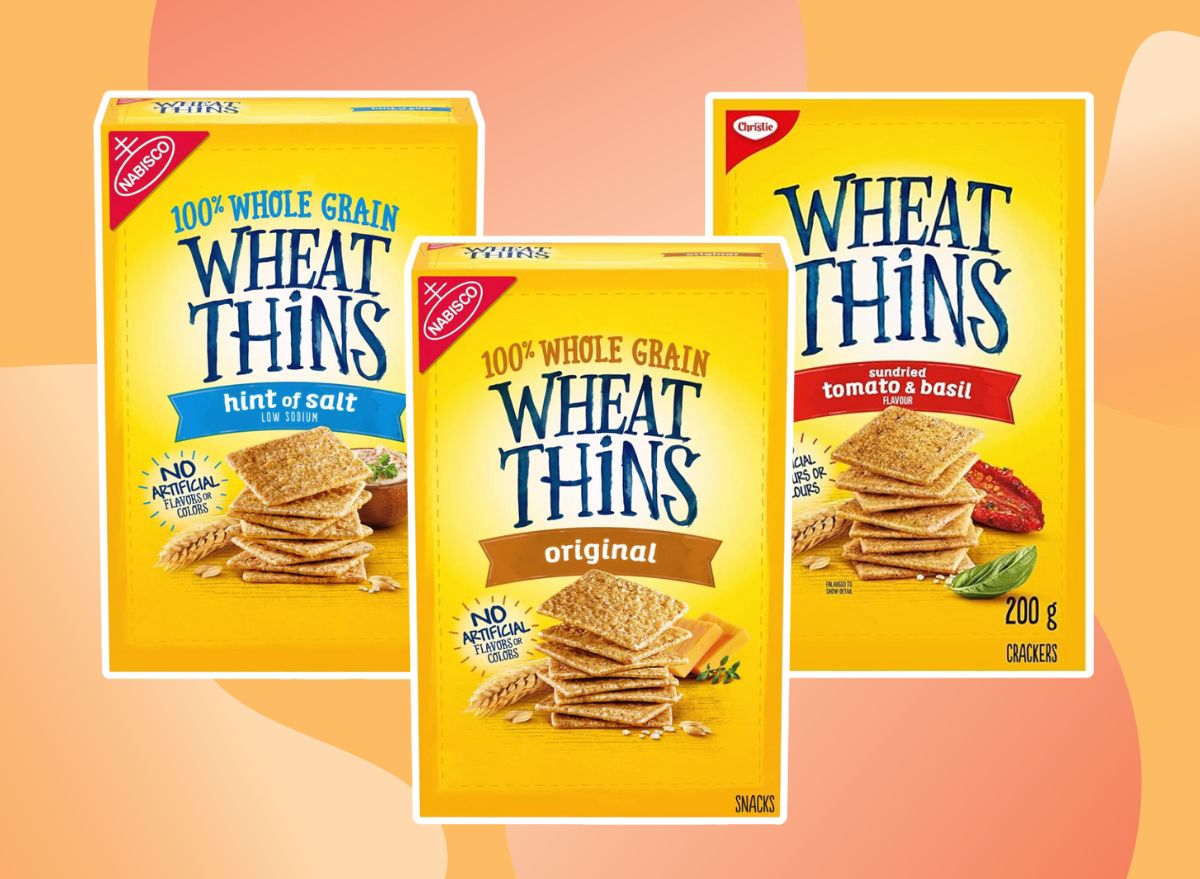
Wheat Thins offer an irresistible blend of salty, sweet, and nutty flavors that can make them almost addictive. Enjoy these crackers on their own, pair them with cheese, dip them into your favorite spreads, or slather them with nut butter—the options are endless! The packaging highlights 100% whole grains, and the name "Wheat Thins" suggests a wholesome choice. But are Wheat Thins healthy?
We're taking a closer look at the ingredients, nutrition facts, and health benefits and drawbacks to help you decide if Wheat Thins deserve a spot in your grocery cart. Read on, then check out The 15 Healthiest Store-Bought Crackers, According to Dietitians.
What Are Wheat Thins?
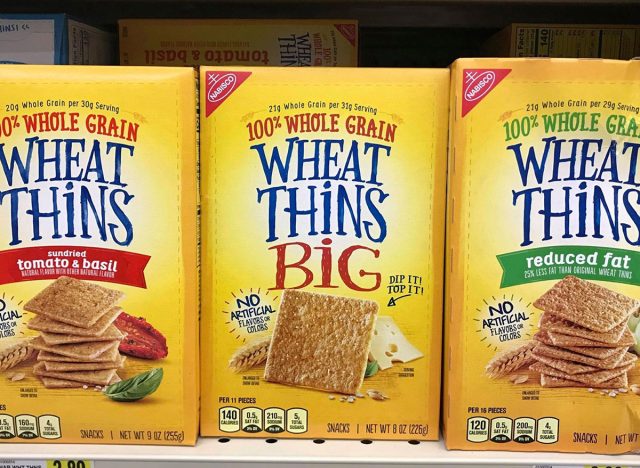
Wheat Thins are a classic staple in the snack cracker world, gracing grocery store shelves since 1947. Known for their thin, crunchy, square shape, they come in a range of flavors and sizes to suit any snacking style.
- Original
- Sundried Tomato & Basil
- Hint of Salt
- Reduced Fat
- Big
Nutritional Profile of Wheat Thins
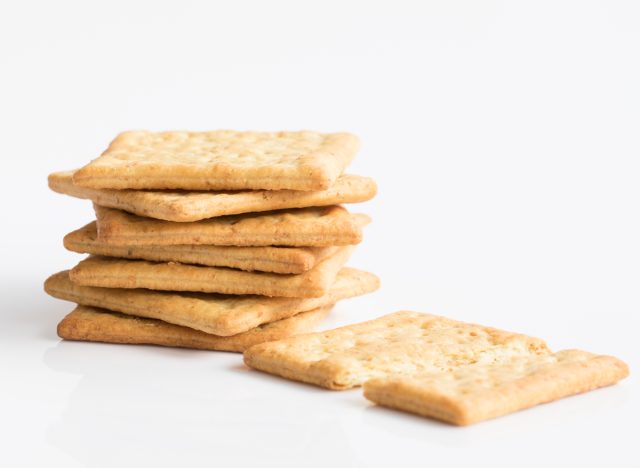
One serving of 16 Wheat Thins crackers provides:
Calories: 140
Fat: 5 g (Saturated Fat: 0 g)
Sodium: 200 mg
Carbs: 22 g (Fiber: 3 g, Sugar: 5 g)
Protein: 2 g
Wheat Thins offer a clear nutritional advantage over refined white crackers like Saltines or Ritz Crackers, as they are made with 100% whole-grain flour and provide a good source of fiber.
Thanks to their thinness, a serving of Wheat Thins typically includes more crackers than refined options. However, one drawback is that Wheat Thins contain more added sugar than some of their refined counterparts.
Wheat Thins Ingredients
When it comes to health, Wheat Thins score a point for having a relatively short ingredient list.
The ingredient list for Original Wheat Thins:
- Whole grain wheat flour
- Canola oil
- Sugar
- Cornstarch
- Malt syrup
- Salt
- Refiner's Syrup
- Leavening (Calcium Phosphate, Baking Soda)
Wheat Thins gain extra points for making whole-grain wheat flour their first and most prominent ingredient. However, they lose some ground for containing three types of added sugars: sugar, malt syrup, and refiner's syrup.
On the upside, Wheat Thins use canola oil, a monounsaturated fat that's healthier than the soybean or palm oils found in crackers like Ritz or Club Crackers.
Health Benefits of Wheat Thins
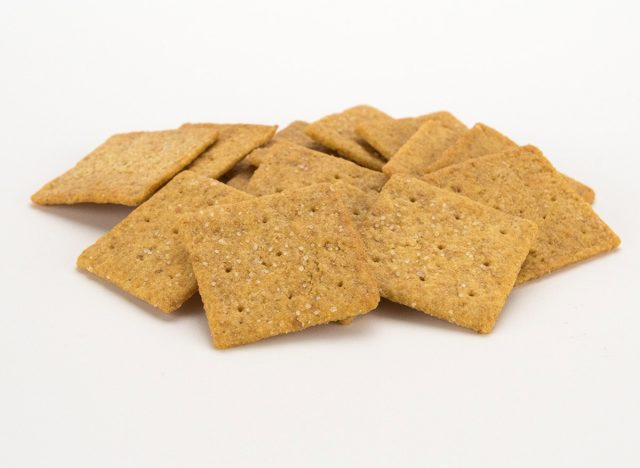
Wheat Thins offer several health benefits.
Made With Whole Grains
The primary ingredient in Wheat Thins is whole-grain wheat flour. Whenever you see the word "whole" before the name of a grain, the product uses a flour containing the entire kernel: the bran, germ, and endosperm. This boosts fiber, vitamins, and minerals compared to refined or enriched flour. The U.S. Dietary Guidelines recommend making half your grains whole, and one easy way to do this is to swap out a refined or enriched wheat cracker for a whole-grain option, like Wheat Thins.
'Good' Source of Fiber
Each serving of Wheat Thins packs 3 grams of dietary fiber (10% DV), a nutrient many Americans don't consume enough of. Research links fiber to numerous health benefits, such as better gut health, blood sugar regulation, weight maintenance, and reduced risks of heart disease and type 2 diabetes.
Contains Some Protein
Wheat Thins offer a bit of protein, clocking in at 2 grams per serving. Protein and fiber work together to keep you fuller for longer and prevent you from eating the entire box in one sitting.
Low in Unhealthy Fats
Wheat Thins contain unsaturated fats, the type of fat you want more of in your diet. They have 0 grams of saturated fat, which is best limited due to its connection to heart disease when consumed in excess.
Potential Drawbacks of Wheat Thins
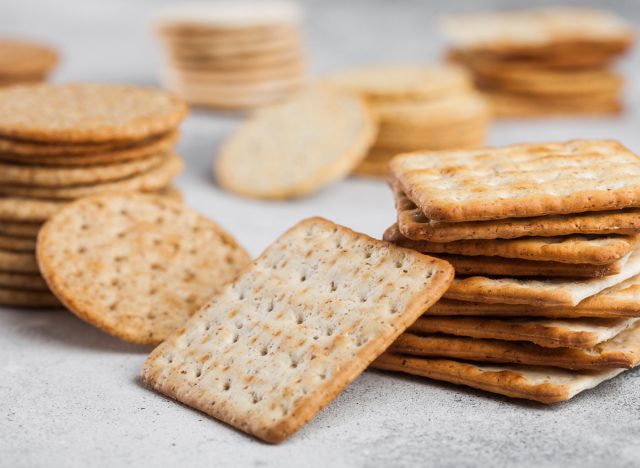
While Wheat Thins offer several health benefits, it's important to consider some potential drawbacks, too.
Contains Added Sugar
Wheat Thins contain 5 grams of sugar per serving, with 4 grams from added sugar sources. This is higher than other cracker options and can be concerning, as most Americans have been overdoing it in the sugar department. The average person consumes up to 71 grams of sugar, while the American Heart Association recommends limiting added sugar to no more than 25 grams for women and 36 grams for men.
Considered a 'Medium' Source of Sodium
Another potential drawback is sodium content (and another nutrient we tend to overdo). While a serving of Wheat Thins contains 200 milligrams of sodium, falling into the "medium" sodium range, it's important to consider your overall sodium intake for the day. The Dietary Guidelines recommend adults limit sodium intake to no more than 2,300 milligrams daily. Most pre-made and shelf-stable packaged foods contain some sodium. Pairing Wheat Thins with cheese or dips can significantly increase the total sodium content of your snack, so opting for healthy, low-sodium pairings is key.
Are Wheat Thins Healthy?
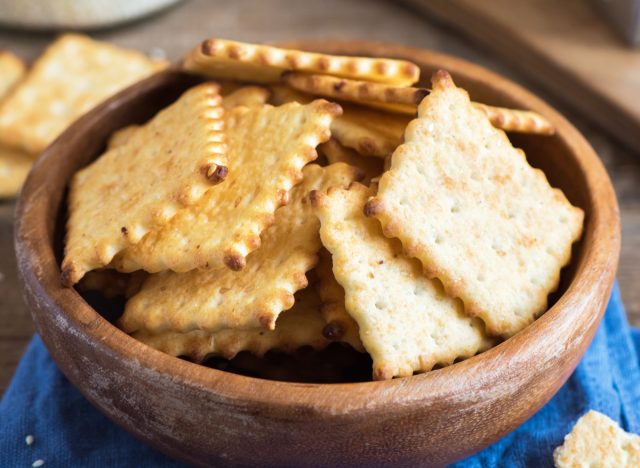
Wheat Thins can be a healthy snack option that fits into a balanced diet. While they're tasty, it's best to stick to one portion per sitting. For an added nutritional boost, consider pairing Wheat Thins with other nutrient-dense foods that are naturally low in sodium and contain no added sugar, such as sliced-up veggies, fruits, unsalted nuts, nut butter, and Greek yogurt.
Final Thoughts
Just like with fruits and vegetables, it's ideal to vary your grain sources. Don't just rely on Wheat Thins to provide you with a serving of grains for the day. Aim for a variety of whole grains, such as popcorn, oats, barley, and quinoa, which can offer a wide range of wholesome nutrients.
- Source: https://www.dietaryguidelines.gov/sites/default/files/2020-12/Dietary_Guidelines_for_Americans_2020-2025.pdf
- Source: https://www.ncbi.nlm.nih.gov/pmc/articles/PMC6124841/
- Source: https://www.heart.org/en/healthy-living/healthy-eating/eat-smart/fats/saturated-fats
- Source: https://www.heart.org/en/healthy-living/healthy-eating/eat-smart/sugar/how-much-sugar-is-too-much#:~:text=Men%20should%20consume%20no%20more,or%20100%20calories)%20per%20day.
- Source: https://www.fda.gov/food/nutrition-education-resources-materials/sodium-your-diet#:~:text=As%20a%20general%20guide%3A%205,one%20serving%20of%20the%20food.
- Source: https://www.fda.gov/food/nutrition-education-resources-materials/sodium-your-diet#:~:text=However%2C%20most%20Americans%20eat%20too,1%20teaspoon%20of%20table%20salt!









